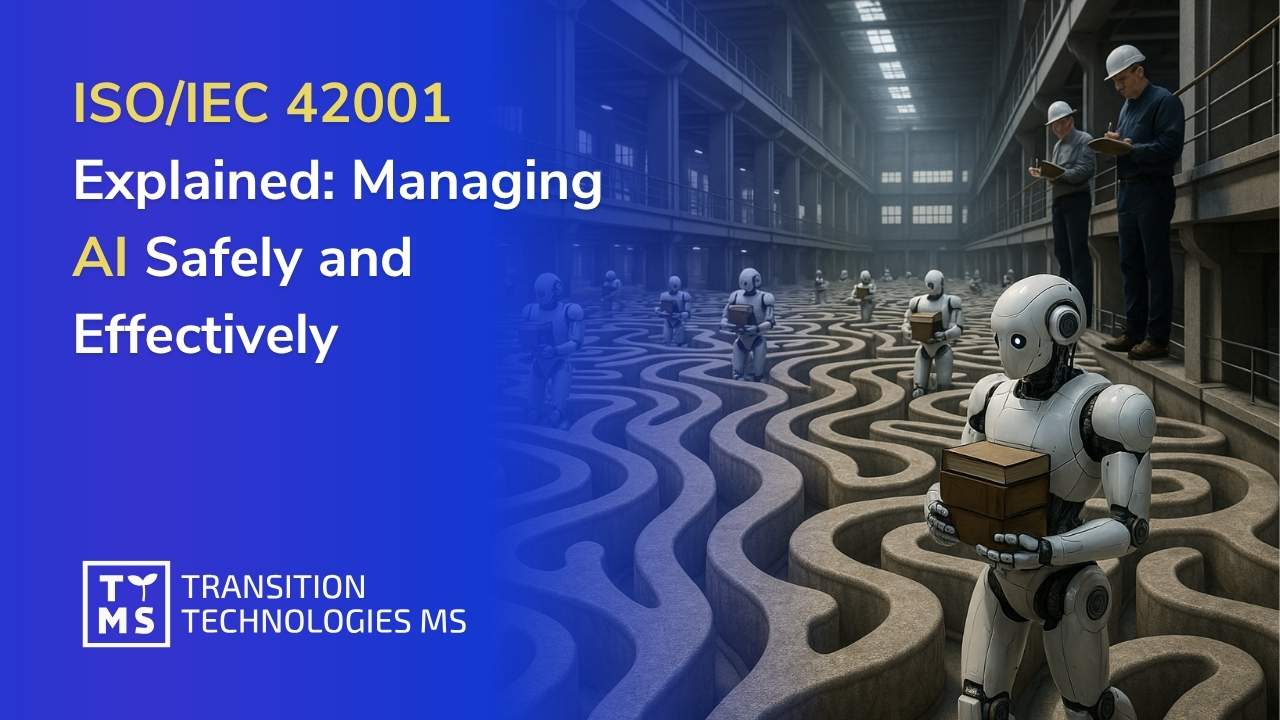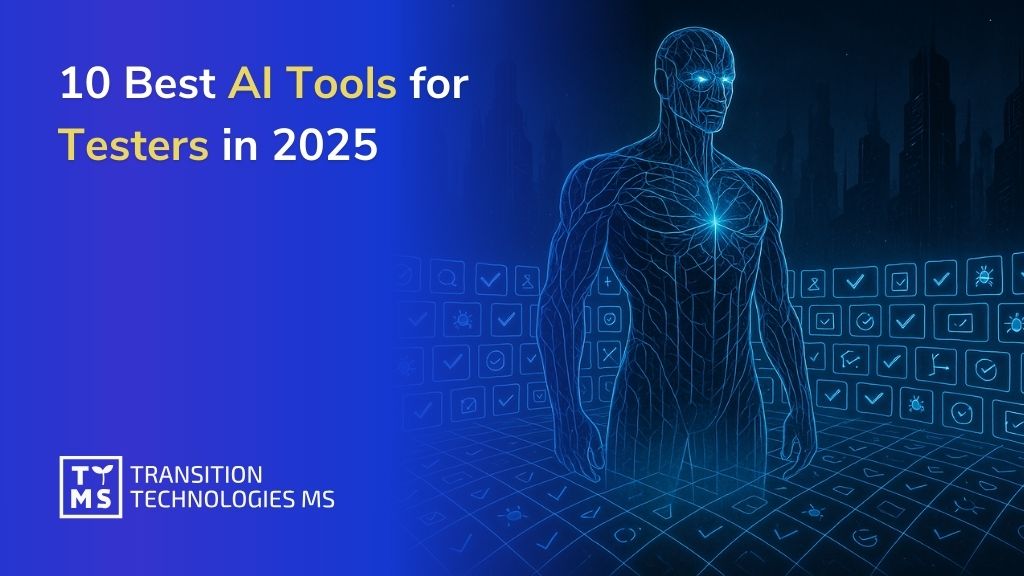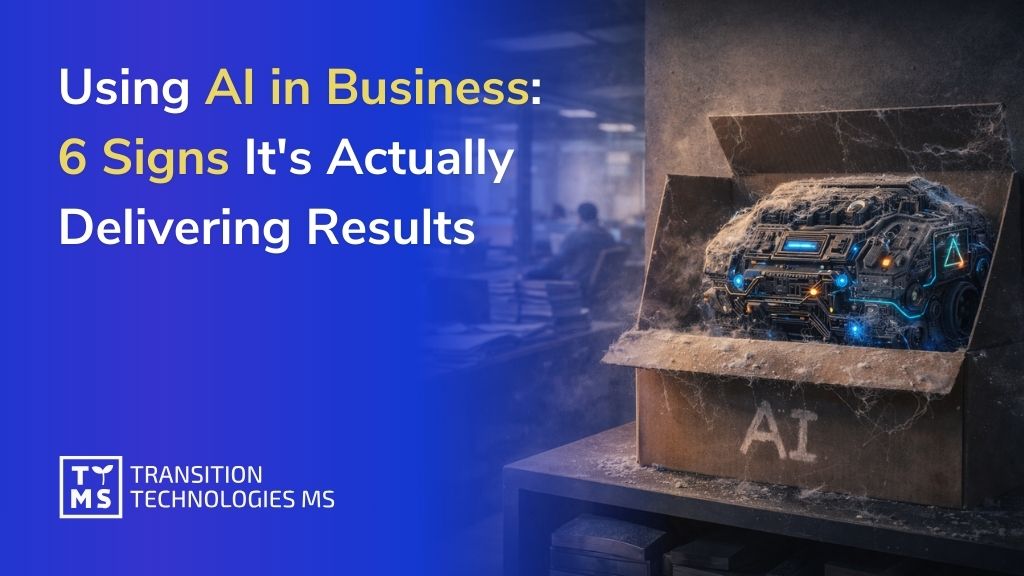Implementing SAP S/4HANA is a huge challenge for teams in large organizations – not just technologically, but above all, in terms of competencies. In this article, we show how e-learning can significantly speed up user adoption, reduce errors, and lower migration costs.
This article is particularly useful for managers of finance, HR, and IT departments, as well as for individuals responsible for SAP migration in medium and large companies.
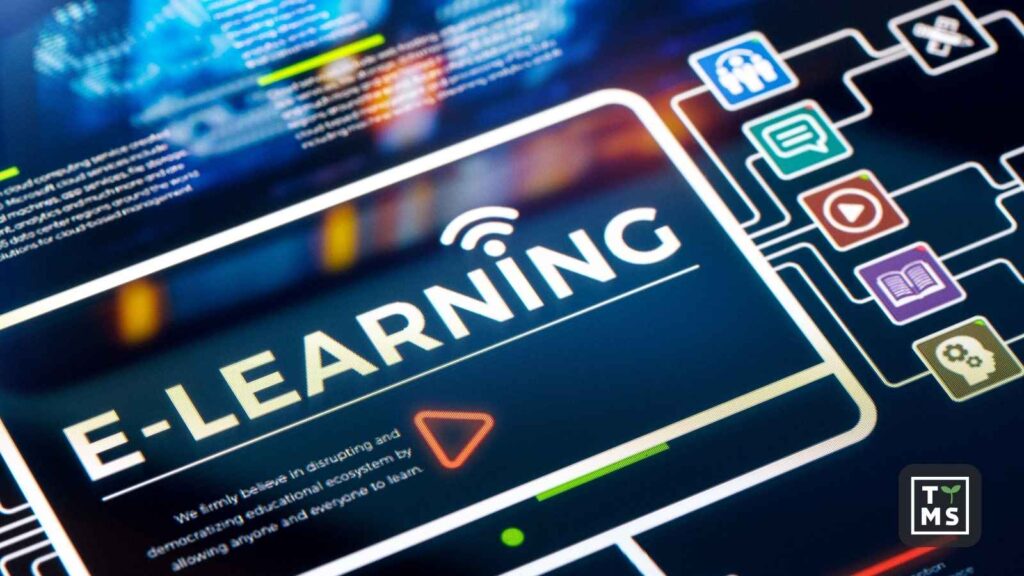
SAP has announced that support for the older SAP ECC (ERP Central Component) system will end in 2027, with an option to extend until 2030 under paid extended support. This means that thousands of companies worldwide are forced to migrate to SAP S/4HANA – a modern, integrated ERP platform. This change brings not only technological challenges but, above all, a huge organizational and competency transformation.
In large, global structures, it’s not enough to “train everyone at once.” It becomes crucial to tailor learning paths to roles, departments, and daily tasks within the SAP system. Well-designed e-learning not only reduces the costs of traditional training but also accelerates user adoption, minimizes errors, and ensures a better return on investment. In this article, we demonstrate how modern e-learning can play a key role in a smooth transition to SAP S/4HANA – especially in complex international organizations.
When Magda – a finance department manager in a global company – heard they were “moving to the new SAP,” she thought it was just another system update. A few changes in the menu layout, maybe some new reports. However, on the very first day after the SAP S/4HANA launch, her team was confronted with a completely new interface, a different operational logic, and the need to report even the simplest actions to the IT department.
– But we’ve been doing it differently for the last 10 years! – one of the analysts kept repeating.
Sound familiar? Although this example was created for the article, it perfectly reflects the reality of many organizations. Migrating to SAP S/4HANA is not just a technology change – it’s a profound transformation in the way of working and thinking about business processes. So before we move on to the role of e-learning and user support, it’s worth understanding what SAP S/4HANA really changes and why it is crucial for the daily functioning of teams.
1. What does SAP S/4HANA change for users? A new interface and a new experience of working with the system
SAP S/4HANA requires end-users to do more than just adapt to a newer version of the system. It’s a completely new way of working with an ERP tool – faster, more intuitive, and tailored to modern business needs. Here’s what really changes in the daily operation of SAP after migrating to S/4HANA:
1.1 Modern user interface – SAP Fiori
SAP Fiori is a modern work environment based on tile applications. The Fiori interface works in a browser, on a computer, tablet, and smartphone. Users get access to simple, clear screens that resemble the logic of familiar mobile applications.
This makes using the system more intuitive – screens can be personalized, shortcuts can be created for the most frequently performed tasks, and daily work becomes smoother and faster.
1.2 Real-time work thanks to SAP HANA technology
One of the biggest technological changes is the switch to the in-memory SAP HANA database, which translates into a huge performance increase. Reports, statements, and analyses are generated instantly, without the need for waiting or data buffering. Many obsolete tables disappear, for example, in the finance area (FI/CO), which significantly simplifies processes.
1.3 Built-in analytics and reporting in SAP S/4HANA
Users no longer need to export data to Excel to create reports or charts. SAP S/4HANA offers integrated analytical tools, such as dashboards, KPIs, and alerts – available directly in the application. This allows decisions to be made faster and based on current, precise data.
1.4 Simplified processes and automation of tasks
The new SAP consolidates many activities in one place – for example, instead of creating a document, checking it, and posting it separately, the user performs the entire process within a single screen. The system automates repetitive tasks and reduces the number of clicks, which genuinely shortens work time and decreases the number of errors.
1.5 Support from artificial intelligence and machine learning
SAP S/4HANA uses AI and machine learning to predict user needs and suggest next steps. Employees in finance, procurement, or HR can receive recommendations, automatic notifications about anomalies, and improvements in daily tasks – all without the need for additional rule configuration.
1.6 Remote work and cloud availability
The new SAP also means greater flexibility – users can log into the system from anywhere using a browser. SAP S/4HANA works both on-premise and in a cloud model, allowing the company to adapt its IT infrastructure to real needs. Regular updates provide access to the latest features without downtime or technical implementations.
SAP S/4HANA introduces many real improvements:
- a modern Fiori interface,
- instant data processing,
- simplified process handling
- access to the system from anywhere.
For teams, this means a chance for faster, more effective, and intuitive work. But technology in itself does not guarantee success.
For these changes to bring tangible results, employees must know how to use them – consciously, efficiently, and to their full potential. This is where properly designed training and e-learning play a key role. Because even the best ERP system will not improve a company’s efficiency if its functions remain unknown or are used randomly.
In the next part of the article, we will look at how e-learning can support SAP S/4HANA users and help the organization maximize the potential of the new system version.
Importantly,
the first weeks after implementing SAP S/4HANA are an excellent time to strengthen team competencies. This is a period when users are particularly open to learning and need access to clear instructions, practical materials, and a safe environment for practice. Organizations that plan this stage in advance have a chance not only to accelerate adoption but also to leverage the full potential of the new system from the very first days of work.

2. How can e-learning help with a smooth transition to the new SAP S/4HANA version?
Implementing SAP S/4HANA is not just a technology change – it’s a comprehensive transformation of processes and the organization’s operational structure. The system covers many business areas, each of which operates according to its own rules and requires an individual approach. Therefore, a universal “one-size-fits-all” training approach usually proves ineffective.
When planning training for the new SAP version, it’s worth considering the diversity of roles, skill levels, and the specific nature of work of individual teams. In the remainder of this article, we will examine the key elements that must be taken into account to effectively prepare the organization for work in the new SAP S/4HANA environment and to utilize its potential in practice.
2.1 Customizing training for roles and processes
One of the biggest challenges during an SAP S/4HANA implementation is the diversity of the audience. In a large organization, the system is used by tens, sometimes hundreds of people – from different departments, with different competencies, and completely different needs. A procurement specialist works differently than a financial analyst, and differently still from someone approving documents or a manager leading a team. Therefore, it is crucial that training is not uniform, but precisely tailored to specific roles and tasks.
During the implementation phase, many companies start with general training for entire departments, such as sales, logistics, or finance. This is a good starting point that helps build a common understanding of the system and its functions. However, true effectiveness only appears when users receive materials tailored to their daily work.
Modern e-learning allows you to go a step further. Thanks to its modular structure, separate training paths can be prepared that meet the needs of specific users:
- An Accountant learns how to use the financial module, book invoices, and report costs.
- A Logistics Specialist practices scenarios related to goods receipt, warehouse management, and issuing Goods Issue documents.
- A Salesperson learns about new functions related to order fulfillment, customer service, and sales analysis.
- A Manager acquires knowledge about approvals, access control, and decision-making reports.
Moreover, training can be designed along a specific process, not just a function – e.g., from the moment an order is placed, through approval, to booking the costs and generating a report. This helps users better understand how their role fits into the company’s overall operations.
The result? Greater engagement, faster knowledge acquisition, and a real translation of training into daily work. And this is what organizations implementing SAP S/4HANA care about most.
2.2 Utilizing materials from live training sessions
During SAP S/4HANA implementations, many experts share a huge amount of knowledge – they conduct training, create scripts, instructions, and presentations. The problem is that after the session ends, these materials often end up on company drives and… disappear into a maze of folders. Employees know something existed, but they have neither the time nor the patience to dig through dozens of pages of PDFs.
Meanwhile, well-designed e-learning can breathe a second life into these materials. An example? An order approval instruction created for a procurement department training can be transformed into an online training module with a simple “step-by-step” scenario. By adding a short quiz or an interactive exercise, the user not only reads but also practices the given action. What’s more, such content can be placed in the company’s knowledge base, where everyone – regardless of department and location – can find the necessary information exactly when they need it.
The result? Materials created once become a durable, accessible, and practical resource that supports the organization not only during implementation but long after.
2.3 Focusing on what really matters
Many SAP project managers recall the same experience: presentations, schedules, training – everything buttoned up. Training was organized for finance, sales, and logistics departments – all “cross-sectionally.” But just a few days after the system went live, emails and calls started coming in with questions like: “How do I correct a purchase document for a non-EU supplier?” or “What should I do if the workflow rejects an approval at the 3rd stage?”.
It turns out that the biggest challenge is not the “main SAP functions,” but specific, daily, often very particular scenarios. And it is in these cases that classic training is not enough.
This is where e-learning comes in. Thanks to it, it is possible to quickly create and update content that addresses niche but crucial processes – those that occur rarely but have significant operational or regulatory importance. Moreover, the user does not have to attend another 3-hour meeting – they can go through a specific module right when they face that particular problem.
This ability to learn at one’s own pace, without pressure, with materials available on demand, makes even complex and non-intuitive procedures understandable. And the organization can be sure that not only the “big topics” have been covered – but also those quiet, demanding ones, often overlooked in migration schedules.
2.4 Summary:
Well-designed e-learning becomes a strategic tool in the implementation of SAP S/4HANA – and beyond. Above all, it simplifies the absorption of complex processes that can be overwhelming in their classic form. Instead of a lecture on data structure and approval stages, the user receives clear scenarios, interactive instructions, and step-by-step exercises.
What’s more, e-learning works where and when it’s needed – regardless of time and place. An employee from another country, another shift, or after a long absence can return to the materials at any time and remind themselves what to do and how to do it.
Such a learning system ensures that the organization does not lose efficiency after implementation – on the contrary, it can maintain and strengthen it, because knowledge does not disappear when the classroom training ends. And all this without the need to repeatedly engage trainers and budgets. Content prepared once can serve dozens, or even hundreds of users – with the same quality and effectiveness.

3. E-learning after SAP S/4HANA implementation – our experience working with clients
“We have a new system, everything works, but… our people don’t know how to use it.”
We’ve heard this phrase too often. And that’s why – instead of creating another generic course that ends up on the company intranet and fades into oblivion – we built something different together with our clients. Practical, agile, and user-tailored e-learning that genuinely supports the migration to SAP S/4HANA.
3.1 We start with people, not the system
Instead of asking, “what has changed in SAP?”, we asked, “how will your people use it now and what do they want to achieve?”
We began every project with a needs analysis and consulting. We met with end-users, the IT department, and the project team. We checked who actually uses SAP – and how. It turned out that the “ordering” process looks completely different for a salesperson in Poland than for the finance department in other countries. This stage allowed us to design tailor-made training paths – without guesswork.
3.2 The SAP expert – a key ally
On the client’s side, we always collaborated with an internal SAP expert. This person helped us identify key functionalities, tested e-learning versions, and ensured compliance with company procedures. Thanks to this, our training was not a theoretical fantasy, but a real reflection of daily work.
3.3 Training versions tailored to needs
Not every user needs the same thing. That’s why we prepared different e-learning variants – from quick introductory courses, through extensive modules with exercises, to interactive educational games. For some companies, general training was important, while others expected “deep dive” versions for specific roles, such as an accountant or a logistics specialist.
3.4 Test without stress – sandbox and feedback
One of our favorite solutions was creating a SANDBOX environment – a safe place where the user could click, try, make mistakes… and get immediate feedback. This fundamentally changed the learning process – from passive knowledge absorption to active exploration, which increased self-confidence.
3.5 Gamification, storytelling, and scoring
What if the user took on the role of an SAP detective who has to solve the puzzle of an incorrect workflow?
We implemented such an approach for one of our clients – combining gamification with real business scenarios. The user not only learned but also experienced a story, competed, and earned points. The result? More engagement and better operational memory.
3.6 Translations and localization
For companies operating globally, we conducted full coordination of translations. We made sure the language was consistent with what the user sees in SAP, and that the content was culturally neutral and understandable for every team – from Shanghai to Lisbon.
3.7 Updates? Not a problem
SAP S/4HANA is a living system. It changes, updates, adapts. Therefore, our e-learning was not frozen either. Together with the client’s teams, we tracked changes, reviewed differences between versions, and updated the training when necessary. This ensured the user always worked with current information.
3.8 Communication and internal support
We knew that even the best e-learning wouldn’t help if people didn’t know where to find it. That’s why we supported internal communication through the availability of our experts and readiness to provide just-in-time support.
3.8 What did we achieve together with our clients?
- Employees adapted to the new system more quickly.
- Training was tailored to their roles and real tasks.
- E-learning was a living, current, and scalable tool – not a one-time event.
- We collaborated with advisory teams, e.g., from Deloitte, to transform technical documentation into accessible, engaging training for thousands of users.
Implementing SAP S/4HANA is not just a system change – it’s a change in the way people work. And we help make this change smooth, understandable, and positive.

4. Why does training employees on SAP S/4HANA genuinely lower operational costs?
Perhaps many managers wonder if it’s worth designing extensive training for employees after migrating to the new SAP version. The costs and budget required for this may seem overwhelming – especially in companies that rarely face such large technological changes. However, the experience of international organizations and large corporations shows one thing clearly: it’s worth investing in training.
The lack of a well-planned educational program is only an apparent saving. In practice, it often turns out that employees – deprived of knowledge and support – wander through the interface after the system implementation, uncertainly performing even basic tasks. The new environment, changed processes, and unknown functions lead to frustration, errors, and wasted time. This, in turn, translates into a decrease in team efficiency and generates operational costs that are difficult to estimate accurately but which genuinely burden the organization every day.
Migrating to SAP S/4HANA is a strategic investment – however, its full potential can only be unlocked when employees are properly prepared to work in the new system. Well-designed training – especially in the scalable form of e-learning – is not an expense, but an optimization tool that genuinely translates into the operational efficiency of teams and a faster return on investment.
4.1 Fewer errors, fewer corrections
Well-trained employees make fewer operational errors that can lead to costly corrections, delays, or audit consequences. A lower risk of mistakes also means less time spent on explanations and technical support.
4.2 Faster and more effective processes
The new SAP Fiori interface, simplified approval paths, and automated processes significantly shorten the time it takes to perform daily tasks – but only if the user knows how to use them. Training eliminates unnecessary clicks and downtime, allowing teams to work faster and smarter.
4.3 Full system utilization = greater return on investment
Many organizations use only a fraction of SAP S/4HANA’s capabilities because users are unaware of the available functionalities. Training helps to discover and implement features like built-in reports, KPIs, workflows, or AI-based predictions – without the need to invest in additional tools.
4.4 Reducing the load on the IT department and helpdesk
The more independent the end-users are, the lower the burden on the IT department. Thanks to training, the number of tickets, queries, and problems to be solved decreases. This is a real saving of internal experts’ resources and time.
4.5 Achieving productivity faster after implementation
Companies that invest in training even before the system goes live shorten the time needed for full adoption. Effective users achieve operational goals faster, which translates into a faster return on the SAP S/4HANA implementation.
Conclusion? Training is not an add-on – it is a prerequisite for the effective use of the new SAP version and for the long-term reduction of operational costs. In the next section, we will show how e-learning can support this process in a scalable way that is tailored to the needs of large organizations.
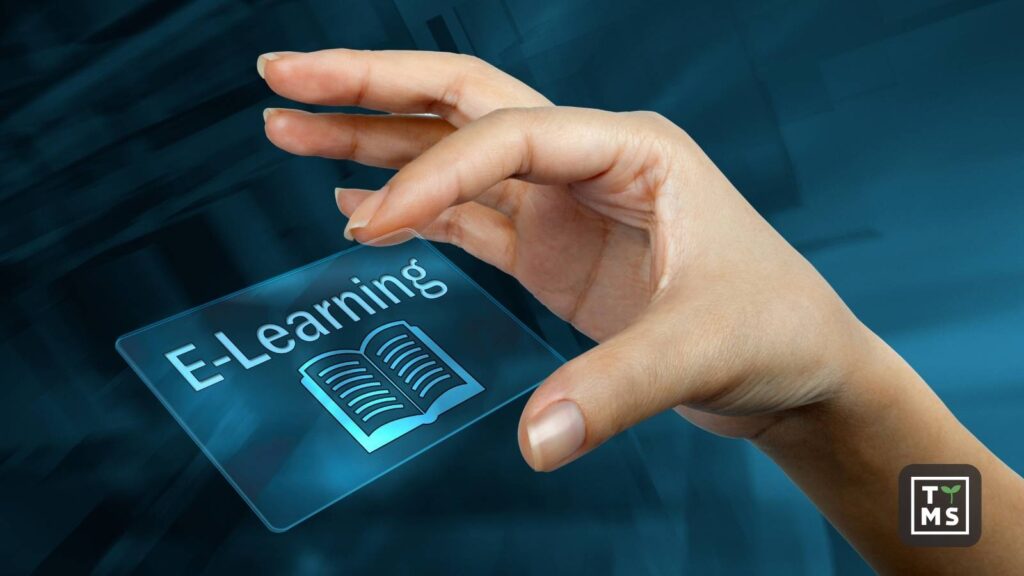
5. New generation e-learning – the future of corporate training with a real return on investment
With the dynamic development of SAP S/4HANA, the demand for intelligent tools is growing. These tools not only support users’ daily work but also enable the effective acquisition of new knowledge. Today’s e-learning is no longer just about videos and tests – it’s about integrated, interactive training environments powered by artificial intelligence.
At Transition Technologies MS, we create our own AI-based solutions that completely change the way companies implement and learn to work with ERP-class systems.
Check out our secure solutions powered by artificial intelligence:
- AI4Legal – Artificial Intelligence (AI) Solutions for Law Firms
- AI4Content – AI Document Analysis Tool – Fast, Secure, Flexible
- AI4E-learning – AI tool for e-learning for organizations
- AI4Knowledge – AI system for knowledge management in a company
- AI4Localisation – AI Translator for Business Needs
5.1 AI – intelligent support for education
Our proprietary tool, AI 4 E-learning, allows for the creation and organization of organizational knowledge in a completely new way. The tool, created by the TTMS e-learning team, enables the automatic generation of ready-made e-learning courses based on provided source materials. This allows us to go from raw content (e.g., a presentation, Word document, or PDF) to a professional, interactive course ready for publication on an LMS platform in just a few minutes.
The tool supports people who do not have expert knowledge in course creation. The user does not need to analyze the entire material and write a script themselves, because AI4 E-learning does it for them. The result is a complete e-learning course generated in the form of an interactive presentation with a voice-over and selected language versions.
This allows companies to significantly shorten the time and reduce the cost of training production, while maintaining high substantive and visual quality. AI4 E-learning is a real support in the process of digitizing knowledge and developing employee competencies in modern organizations.
5.2 Personalization and training recommendations
The use of AI in e-learning tools also enables individual training recommendations based on:
- user roles,
- their activity in the system,
- as well as specific areas they have difficulties with (e.g., handling the “payment-to-cash” process).
Thus, users are not flooded with unnecessary knowledge but receive precisely tailored content that helps them work more effectively and faster in SAP S/4HANA.
5.3 Data for managers – knowledge about team needs
From a management perspective, tools like AI 4 Knowledge provide information about what employees are looking for, what processes they have problems with, and where it is worth implementing additional training or process support. This is real value that translates into increased efficiency and reduced errors.
A modern approach to e-learning is not just educational materials, but a whole ecosystem that supports the user in their actions – integrated, contextual, and intelligent. At Transition Technologies MS, we develop it every day to facilitate digital transformation with SAP S/4HANA for organizations.
5.4 Summary: lower costs, greater efficiency – real benefits of AI in SAP e-learning
By investing in modern e-learning solutions supported by artificial intelligence, companies not only increase user engagement in learning the SAP S/4HANA system but also genuinely lower operational costs. How much could these amounts be? In large organizations, where traditional training costs hundreds of thousands of zlotys per year, switching to automated, scalable e-learning can bring savings of up to 40–60%. And that’s just the training cost – additional profits come from fewer errors, faster onboarding, and greater team productivity.
What’s more, solutions like AI 4 Content and AI 4 Knowledge also work after implementation – they continuously support employees in their daily work, reducing the time needed to search for information, eliminating repetitive questions, and facilitating independent problem-solving.
5.5 Conclusion: the future of training is automation, personalization, and availability here and now
For many companies, implementing SAP S/4HANA is a symbol of moving to a higher level of digital maturity. However, without properly prepared users, even the best system may not fulfill its potential.
That’s why at Transition Technologies MS, we focus on modern e-learning that evolves with the company – intelligent, adaptive, and available exactly when it is most needed. This is not just education – it is real support in achieving business goals.
Contact us now, let’s talk about how we can help you develop e-learning in your organization.
What is SAP S/4HANA and why are companies migrating to it?
SAP S/4HANA is a modern ERP platform that replaces the older SAP ECC system. Companies are migrating to S/4HANA due to the end of support for ECC, as well as to gain access to faster data processing (in-memory technology), the modern Fiori interface, built-in analytics, and the automation of business processes, which translates into greater efficiency and lower operational costs.
What are the biggest challenges for users related to the implementation of SAP S/4HANA?
The main challenges are adapting to a completely new interface (SAP Fiori), a different system logic, and the need to learn the changed business processes. Employees must learn how to use the built-in analytics, simplified processes, and AI support to fully leverage the potential of the new system.
How can e-learning lower the implementation costs of SAP S/4HANA?
E-learning lowers costs by reducing the need for expensive on-site training, decreasing operational errors post-implementation (which reduces the number of corrections and IT support requests), enabling teams to achieve full productivity faster, and ensuring full system utilization, which eliminates the need to invest in additional tools.
How does modern, AI-supported e-learning personalize the SAP S/4HANA learning process?
Modern e-learning supported by AI, for example with a tool like AI 4 E-learning, enables the automatic generation of training courses based on existing materials. Additionally, AI personalizes training recommendations based on user roles, their activity in the system, and areas where they experience difficulties, providing them with the exact content they need to work more effectively.
Is e-learning still effective after the SAP S/4HANA implementation is complete?
Yes, e-learning is a tool that remains effective long after the system implementation. It serves as a permanent knowledge base and support tool for employees, who can return to the materials at any time to refresh their memory on procedures and learn about system updates. The scalability of e-learning allows for the continuous training of new employees and the upskilling of current ones, which genuinely supports operational efficiency.

